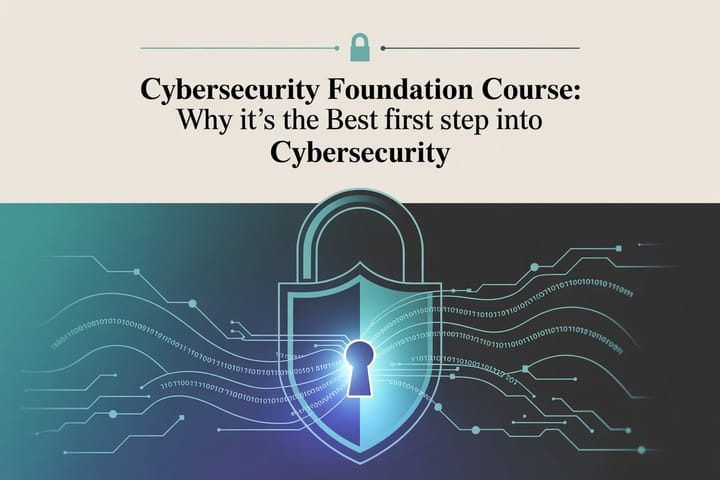AI in Information Security Audits: The Human Side of Automation

Remember those old detective movies where the investigator would pore over stacks of papers late into the night, connecting dots with red string on a corkboard? That’s how traditional information security audits have felt for years—painstaking, manual, and always playing catch-up. But there’s a plot twist in our story, and it’s changing everything.
I’ve spent years in the trenches of information security audits, and let me tell you—the game is changing fast. AI isn’t just another buzzword; it’s reshaping how we approach security compliance from the ground up. Let’s talk about what this means for you, your team, and your sanity.
When Traditional Audits Just Don’t Cut It Anymore
Let’s be honest—traditional security audits are showing their age. They’re like trying to protect a modern smart home with a padlock from the 1950s. It might work for some things, but it’s not designed for today’s challenges.
Think about your last ISO 27001 audit. How many weeks did your team spend gathering evidence? How many late nights did you pull putting together documentation? And the worst part? By the time you finished, some of that information was already outdated.
The reality is that while you’re conducting your annual audit:
- Hackers are developing new techniques daily
- Your cloud environment is scaling up and down automatically
- Bob from accounting just clicked on that phishing email
- Your DevOps team deployed three new microservices
Many organizations are now exploring AI in information security audits to stay ahead of these evolving threats. And it’s about time.
Continuous Security Auditing: Like Having a Security Guard Who Never Sleeps

Remember when “audit season” meant all-hands-on-deck panic for weeks? What if I told you that doesn’t have to be your reality anymore?
Continuous security auditing provides peace of mind that traditional periodic reviews simply cannot match. Imagine having a tireless assistant who’s constantly monitoring your systems, checking configurations, reviewing access logs, and flagging issues—all without complaining about needing coffee or bathroom breaks.
Here’s what this looks like in practice:
Your SIEM system detects unusual login activity at 2 AM. Instead of waiting for a human to review logs during business hours, an AI system:
- Analyzes the behavior against historical patterns
- Checks if it matches known attack signatures
- Reviews the user’s typical login times and locations
- Determines if sensitive data was accessed
- Generates an alert with a risk score and explanation
All before your security team has had their morning coffee.
The shift to continuous security auditing represents a fundamental change in how we approach compliance—from periodic snapshots to real-time awareness.
Risk-Based Auditing That Actually Makes Sense
Let’s face it—not all assets are created equal. Your customer database deserves more attention than the office printer inventory system. But traditional risk assessments often rely on static spreadsheets and gut feelings.
With AI in information security audits, risk assessment becomes dynamic and data-driven:
“Last week, I was reviewing our new AI-powered risk dashboard when I noticed something interesting,” a CISO friend told me recently. “The system flagged a seemingly low-risk server for immediate attention. Turns out, that ‘unimportant’ server had recently been connected to our payment processing system during an update. The AI caught a relationship that would have been missed in our quarterly review.”
AI significantly enhances risk-based security auditing by identifying patterns humans might miss. It can:
- Analyze historical incident data to predict vulnerable areas
- Adjust risk scores in real-time based on changing conditions
- Recommend controls that address your specific risk profile
- Prioritize findings based on actual impact potential
This means your team can focus on what matters most—not just what’s next on the checklist.
Say Goodbye to Evidence-Collection Headaches
If you’ve ever been an auditor or been audited, you know the drill: “Please provide screenshots of all user access reviews for the past year.” Cue the collective groan from the IT department.
The ROI of information security audit automation becomes clear within the first few audit cycles. Just think about the time saved when:
- NLP tools automatically scan policy documents for compliance gaps
- API integrations pull user access lists directly from Active Directory, AWS, or Azure
- Smart document classification systems organize and tag evidence files
- Automated testing verifies control effectiveness without manual intervention
A security director I know put it perfectly: “We used to have two full-time employees dedicated to evidence collection for three months each year. Now they focus on actually improving our security instead of just proving it exists.”
Information security audit automation saves countless hours of manual review work—hours your team could spend on strategic initiatives instead.
When Your Audit Tools Start Noticing Things You Don’t
Traditional access reviews look for the obvious: terminated employees who still have access, users with excessive privileges, or missing approvals. But they miss the subtleties: the employee who suddenly downloads 50 times more files than usual, or the admin who logs in at odd hours only when certain projects are being discussed.
Modern AI audit tools can process more data in minutes than human auditors could review in weeks. They spot patterns like:
- The finance director who only accesses salary information when budget planning isn’t happening
- The gradual privilege escalation that happens over months rather than all at once
- The contractor whose access pattern doesn’t match others in similar roles
“We had an interesting case last year,” a colleague shared. “Our AI flagged a user for accessing customer records outside their territory. Turns out they were helping a colleague during vacation coverage—but they never got formal approval. It wasn’t malicious, but it identified a process gap we needed to fix.”
With continuous security auditing, issues are caught and addressed before they become major problems.
Predictive Security Audits: The Crystal Ball You’ve Always Wanted
What if you could know which areas of your organization are likely to fail an audit before the auditors arrive? Or which users are most likely to cause a security incident in the next quarter?
Predictive security audits allow teams to address vulnerabilities before they’re exploited. This isn’t science fiction—it’s machine learning applied to your historical data.
A healthcare CISO I know implemented predictive models that:
- Identified departments likely to have password policy violations
- Predicted which servers would have unpatched vulnerabilities
- Flagged user groups most likely to fall for phishing attempts
They then targeted training, controls, and resources to those high-risk areas—and saw a 60% reduction in findings during their next audit.
The accuracy of predictive security audits improves over time as the AI learns from your environment. It’s like having a security advisor who gets smarter with every audit cycle.
AI Makes Auditors More Human, Not Less
There’s a misconception that AI will replace human auditors. In my experience, it actually makes them more effective by removing the robot-like parts of their job.
When selecting AI audit tools, look for solutions that complement rather than replace your audit team. The best combinations I’ve seen:
- AI handles data collection and initial analysis
- Human auditors interpret results and provide context
- AI identifies patterns across systems and time
- Humans make judgment calls on risk acceptance
- AI monitors for continuous compliance
- Humans build relationships and understand business needs
“Since implementing AI tools, my conversations with clients have completely changed,” an auditor told me recently. “Instead of arguing about whether a control exists, we discuss whether it’s effective and appropriate for their risk profile. It’s a much more valuable conversation.”
The implementation of AI in information security audits has transformed how teams approach compliance—from checkbox exercises to strategic risk management.
Standards Are Catching Up (Finally!)
If you’ve been in information security for a while, you know standards tend to lag behind technology. The good news is that’s changing.
ISO standards are evolving to embrace the reality of AI-powered security:
- ISO 27001:2022 now includes broader technology considerations
- ISO 27005 provides guidance for AI risk management
- The new ISO/IEC 42001 offers a framework for responsible AI use
This means your investment in AI audit tools isn’t just forward-thinking—it’s becoming a recognized best practice.
Organizations preparing for the future of information security audits are investing in both technology and training. The standards bodies are acknowledging what practitioners have known for years: static, point-in-time assessments aren’t enough anymore.
Let’s Be Real: AI Isn’t Perfect
Despite my enthusiasm, I have to be honest—AI isn’t a magic solution to all your audit problems. Many auditors initially resist information security audit automation until they experience the benefits firsthand.
Challenges you should be prepared for include:
- False positives that require human investigation
- The “black box” problem where AI can’t explain its findings
- Data privacy concerns when monitoring user behavior
- The risk of over-reliance on automation
“Our first implementation was rough,” admitted a security director I know. “The system flagged so many anomalies that we couldn’t investigate them all. We had to tune it significantly and develop clear escalation procedures.”
When considering AI in information security audits, it’s important to balance automation with human oversight. The goal isn’t to remove humans from the equation—it’s to make them more effective.
Getting Started Without Getting Overwhelmed
If you’re intrigued but not sure where to begin, here’s my practical advice:
- Map your current audit processes - Identify the most time-consuming, repetitive tasks that could benefit from automation.
- Start small - Begin with one area, like automated evidence collection or log analysis.
- Invest in training - Ensure your team understands both the capabilities and limitations of AI tools.
- Update your policies - Document how AI tools are governed, validated, and maintained.
- Measure the impact - Track time saved, coverage increased, and issues identified to demonstrate value.
Teams that implement security audit automation report higher confidence in their security posture. But the transition doesn’t happen overnight—it’s a journey that requires planning and patience.
The Future Is a Partnership, Not a Replacement
The future of information security audits will likely combine AI efficiency with human judgment. It’s not about robots taking over—it’s about giving security professionals better tools to do what they do best: protect organizations from harm.
As someone who’s watched this field evolve over years, I’m genuinely excited about where we’re headed. AI is removing the drudgery from audits and allowing us to focus on what matters: meaningful security improvements that protect our organizations and customers.
The initial investment in security audit automation typically pays for itself within 1-2 audit cycles. But the real value goes beyond cost savings—it’s about building a security program that can keep pace with today’s threats.
So, are you ready to transform how you approach information security audits? The tools are here, the standards are catching up, and your competitors are likely already exploring these options. The only question is: will you lead or follow?




Comments ()